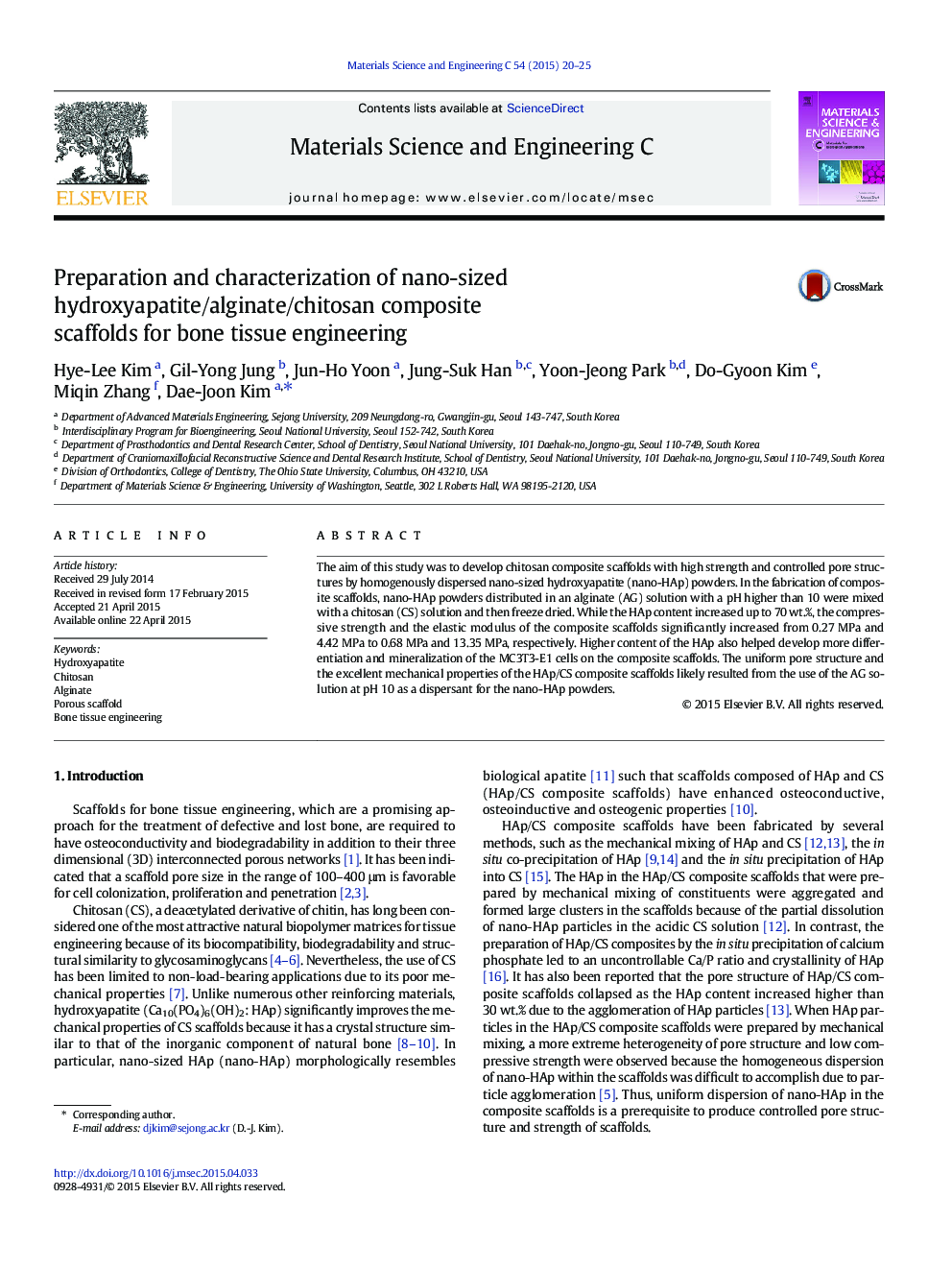| Article ID | Journal | Published Year | Pages | File Type |
|---|---|---|---|---|
| 1428118 | Materials Science and Engineering: C | 2015 | 6 Pages |
•Alginate behaves as a bio-inspired dispersant for nano-HAp/chitosan composites.•Uniform pore structure maintains in composite scaffolds containing even 70 wt.% of HAp.•Mechanical properties of scaffolds increase with HAp content up to 70 wt.%.•Osteoblastic differentiation in scaffolds improves in proportion to HAp content.
The aim of this study was to develop chitosan composite scaffolds with high strength and controlled pore structures by homogenously dispersed nano-sized hydroxyapatite (nano-HAp) powders. In the fabrication of composite scaffolds, nano-HAp powders distributed in an alginate (AG) solution with a pH higher than 10 were mixed with a chitosan (CS) solution and then freeze dried. While the HAp content increased up to 70 wt.%, the compressive strength and the elastic modulus of the composite scaffolds significantly increased from 0.27 MPa and 4.42 MPa to 0.68 MPa and 13.35 MPa, respectively. Higher content of the HAp also helped develop more differentiation and mineralization of the MC3T3-E1 cells on the composite scaffolds. The uniform pore structure and the excellent mechanical properties of the HAp/CS composite scaffolds likely resulted from the use of the AG solution at pH 10 as a dispersant for the nano-HAp powders.
